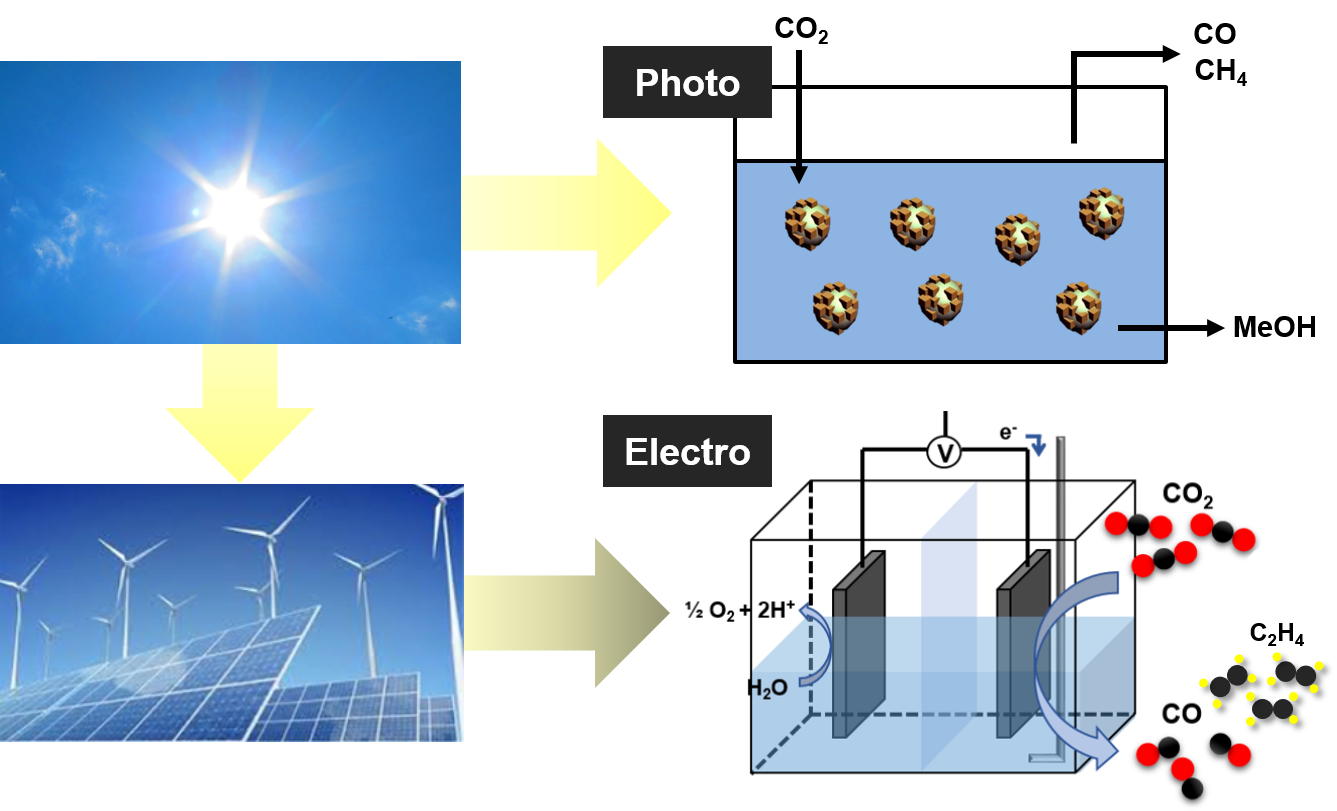|
Renewable energy sources, mainly from sunlight, are the main themes of sustainable energy supply for a long time. The critical problem is, however, volatility of energy resources dependent upon the weather and time. In order to maintain continuous supply, a reasonable energy storage system should be accompanied with the energy production Yet, the energy storage using electrochemical cells could not provide sufficient capacity as well as enough mass and volume densities of storage, therefore, many researchers consider another options based on the efficient conversion of solar energy into chemical energy using simple molecules. Recently, carbon dioxide is of much interest as a mediator for this aim, due to its simple structure and high energy density per molecule. It is also beneficial to restore carbon cycles on earth.
There have been intense researches on direct conversion of carbon dioxide via photochemical, electrochemical and biological approaches. A photochemical method using sunlight in aqueous solution is regarded as an eventual approach, and recently, direct electrochemical carbon dioxide conversion is also attracting much attention, due to its high faradaic efficiency of various chemicals and simple device structure in a single batch. However, these reactions still need to be spent more than 10 years to be a commercial process, because of lack of knowledge on proper catalyst design. For instance, the most efficient photocatalysts reported thus far exhibited very low quantum efficiencies less than 0.04%. The development of new catalysts is definitely an indispensable prerequisite in this field.
In this presentation, we apply the concept of “nanocatalyst”, which has well-defined composition and morphology, to enhance catalytic performances in hydrogen generation and carbon dioxide conversion. We will discuss the importance of structural effects on photocatalysts. We will also present some preliminary results of electrochemical carbon dioxide conversion using noble metal nanocatalysts.
|

|
 121st General Meeting of the KCS
121st General Meeting of the KCS
 121st General Meeting of the KCS
121st General Meeting of the KCS